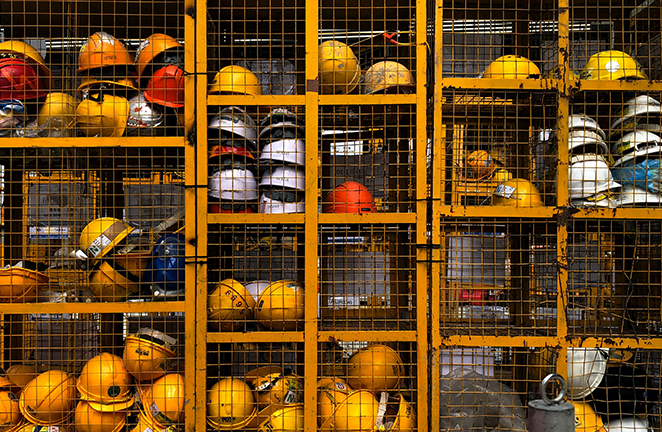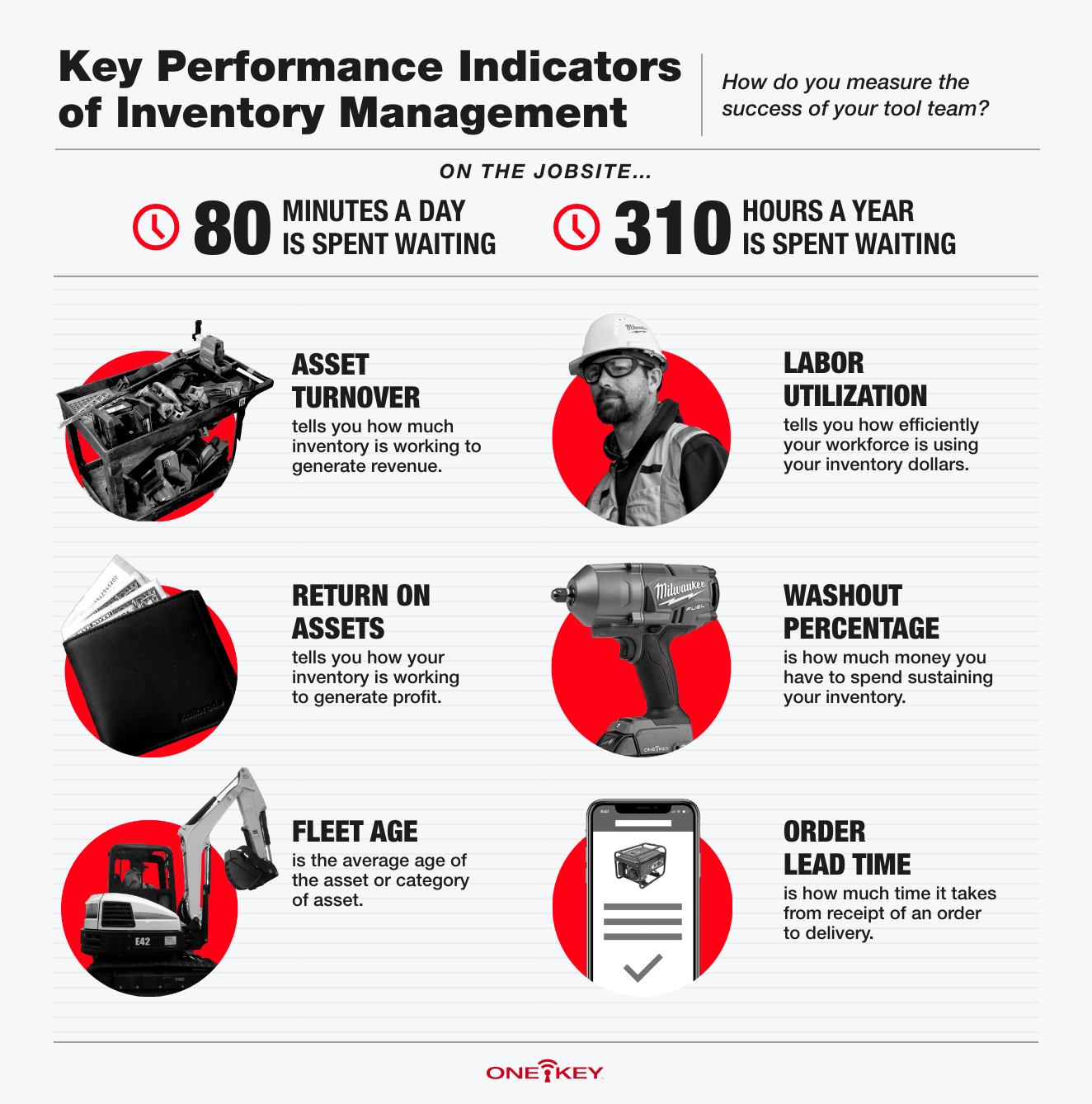In their paper on the subject, the Construction Financial Management Association cautions against precisely this phenomenon. Delving into last year’s budgetary numbers to determine your current financial health may be the traditional go-to method, but it’s not enough to plainly crunch the numbers and observe how many projects went over. It’s about taking the next step to determine why.
In this article, I’d like to focus on one sometimes overlooked area impacting your bottom line: inventory management. We’ll then outline some key performance indicators (KPIs) you should pay attention to that can help you measure the success of your program and stay the course to profitability as you scale.
Inventory Management: The 800-Pound Gorilla in the Tool Room
Downtime is the silent killer to productivity on jobsites. But you already knew that. With trades spending as much as 80 minutes a day (that’s 310 hours a year!) waiting, a system that keeps your logistics running at peak efficiency is imperative.

Despite the fact that you own your equipment, the closest parallel to your tool crib in the real world is wherever you buy your stuff from. If you think of your crib as a distributor or rental shop for your field team (not unlike how retail chains like the Home Depot or ecommerce giants like Amazon rely on their distribution and logistics networks), you can model your team with the right metrics to focus on improving your inventory position and order fill time. Legitimate functional questions are bound to arise from this exercise:
-
How much stuff is the right amount to carry?
-
What's the best way to lay out a warehouse?
-
What are good goals to set for the team?
KPIs of Inventory Management: How Do I Measure the Success of a Tool Team?
There’s no denying that a more streamlined, data-driven approach to inventory management could be one of many tactics within a construction company’s arsenal for driving success and profitability.
But that doesn’t necessarily mean you need to invest in expensive tools and the behemoth warehouse space, inventory, and high-tech robots that the likes of Amazon have turned to in order to streamline their processes and increase the efficiency of their fulfillment centers. These options do exist, and automating certain areas of the construction process through technology, like how to automate construction project quality assurance, makes sense. But without big investment, there are nonetheless plenty of performance metrics you can use to take the temperature of your program, which focus less on the vanity metrics of “did we spend less than last year," and more on how your dollars are helping to drive your business.

Asset Turnover
Asset turnover tells you how much inventory is working to generate revenue. Think of it this way: For every dollar you spend on a piece of equipment, what does it return to the company?
You can calculate your asset turnover by dividing your total annual revenue by the average value of inventory.
Labor Utilization
Productivity has been on the decline in the construction industry for decades. Clearly, it is an indicator of performance worth paying close attention to.
Labor utilization tells you how efficiently your workforce is using your inventory dollars. Think of it this way: For every dollar on a piece of equipment, what does it cost you to pay a guy to use it?
You can calculate your labor utilization by taking the cost of labor and dividing that by the average value of inventory.
A diverse array of new digital technologies is already available to improve your labor utilization—from customizable smart tools to strength enhancing exosuits.
Return on Assets
Return on assets tells you how your inventory is working to generate profit. You’ll be able to demonstrate how you’re making your jobs more profitable. This can be done at a job level.
You can calculate your return on assets by taking your net profit and divide that by the average value of inventory.
Washout Percentage
Washout percentage is how much money you have to spend sustaining your inventory, represented by your annual revenue (for those of you implementing tool rental systems) versus your annual expenses (new purchases, repairs, etc.).
Fleet Age
Fleet age is the average age of the asset or category of asset. This one can be tricky, and that’s why we’ve put together a guide on how to determine whether, given the circumstance, it might make more sense to try to sustain the life of your equipment or to replace it.
Order Lead Time
Order lead time is how much time it takes from receipt of an order to delivery.
Think of it this way: How much time is the field giving to respond to requests?
Wrapping It Up: The Significance of Construction KPIs for Inventory Management
Performance is at the center of everything we do. It decides how much you can get done. It decides how quickly you can realistically get work done for your clients. It determines the level of quality and consistency you can deliver to your clients. And by virtue of all of this, it ultimately decides how much, and how much you’ll continue, to get paid.
Inventory management plays no small part in how productive and profitable your organization can (or can’t) be.
You can affect the success of your tool team by starting to measure some important inventory management KPIs:
-
Asset turnover
-
Labor utilization
-
Return on assets
-
Washout percentage
-
Fleet age
-
Order lead time
You can work with your Project Management team to help build out these KPIs at the job level, or with your accounting department to roll your number up at these business level. Imagine walking into your next review with a new look for your management team, demonstrating how you’ve helped improve the business, and where you’re going to take things in the future. From there, the sky is the limit with how much you’ll get done and how profitable you can become as you scale the construction world of tomorrow.







